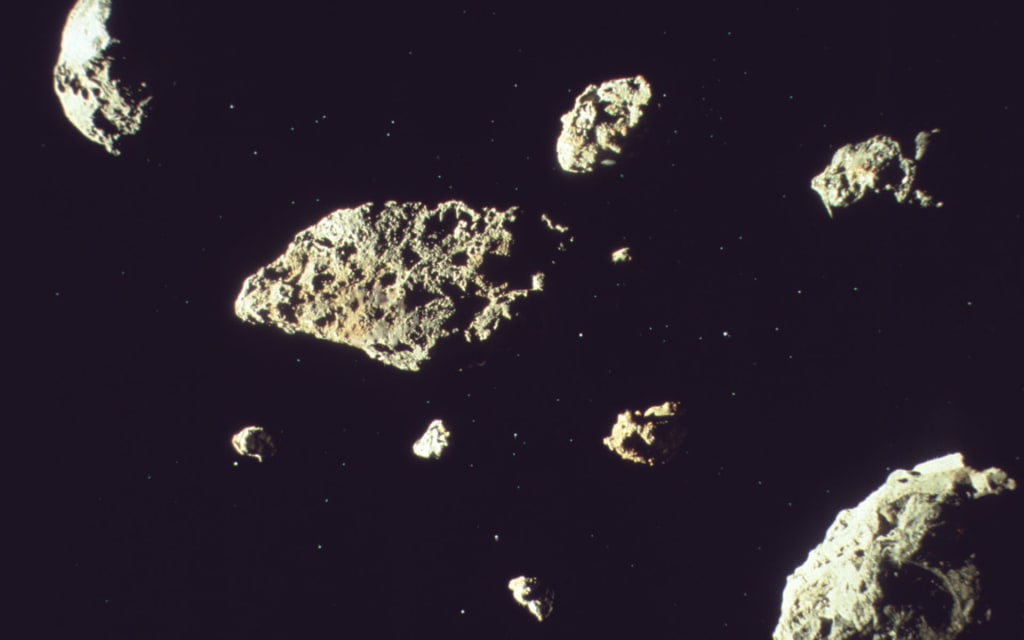What is a Meteor Shower?
Learn the definition of a meteor, a meteorite, and be able to answer the question 'what is a meteor shower' before your next stargazing expedition.

Thousands of people observe the night sky throughout the year, either as a hobby or for scientific purposes. Meteor showers hold a unique benefit over other types of stargazing—you don't need a telescope. You won't even need binoculars. All you will need is an alarm clock to wake you up at the right time, and a sleeping bag if you plan to camp out. However, simply stepping out into your back yard is enough for most to observe a meteor shower. But exactly what is a meteor shower? What are these natural occurrences that we call "shooting stars" and go out of our way to place wishes on? Learning what you're seeing will make your next stargazing session that much more interesting.
What exactly is a meteor?
A lot of people call them "shooting stars" or "falling stars," but actually, meteors have nothing to do with stars.
There are many small particles of dust and rock in space. These particles are called meteoroids. If a meteoroid gets too close to Earth, it becomes affected by the atmosphere's gravitational field. Friction with air molecules heats up the particle as it falls. The meteoroid eventually gets so hot that it begins to glow and disintegrate. We see it as a streak of light, which is referred to as a meteor.
If the particle doesn't disintegrate completely in the atmosphere, the part that strikes Earth is called a meteorite.
How big is a meteoroid?
Most meteoroids are no bigger than a piece of popcorn. Almost all of them disintegrate completely long before they reach the ground.

What is a meteor shower?
If you watch for an hour or so on any clear, moonless night, you probably will see about six meteors. You may see them in any area of the sky. These meteors are called sporadics.
On some nights, you may see many more meteors than normal. They may be seen in any area of the sky, but they can all be traced back to a single point. This point is called the radiant. Meteor showers are named after the constellation in which the radiant is located. For example, the Perseids's radiant lies near the top of the constellation Perseus.
Do the Perseids really come from Perseus?
No. This is just how things look from Earth. It is an optical illusion, similar to how railroad tracks seem to come to a point in the distance. Of course they don't really come to a point, and the same is true of meteor showers. The particles that make up the shower are traveling parallel to each other in space. When they enter earth's atmosphere, they seem to be coming from a single point. This point is seen against a background of stars.

via Nasa
Why are the particles traveling together in space?
Meteor showers are believed to be caused by dust and debris from comets. The particles are spread out all along the comet's orbit around the sun. Some of these comet orbits cross the orbit of Earth. When Earth passes through these orbits, many particles enter our atmosphere. The Perseids are associated with a comet called 1862.
What is the peak of a meteor shower?
The peak of a meteor shower comes when Earth passes through the middle of the comet's orbit and the most particles enter our atmosphere. When this happens, it could be daytime where you live. Then it is best to watch the night before the peak, when the shower is building up. Although most meteor showers are spread out over several days, the number of meteors usually drops off very quickly after the peak.

via Nasa
Why is it best to watch a meteor shower after midnight?
There are two reasons. First, the radiant is likely to be higher in the sky. The horizon won't block your view, and there will be less atmosphere between you and the meteors. Second, after midnight you are on the side of the Earth facing the direction Earth is moving in its orbit. The particles in the meteor shower meet Earth head on.
How many meteors will I see?
That depends on the meteor shower, the sky conditions, and the time you're observing. For example, the average peak rate of Perseids is about 60 meteors per hour. That's about one every minute—hardly like a shower of rain.
Every once in a great while there is a real meteor "storm," with hundreds of meteors every minute. A meteor storm can't be predicted—you just have to be out there when it happens.
Learn More About Meteors
Here we have covered the basics of meteors, meteoroids, and meteorites, and answered the question "what is a meteor shower." To delve deeper into the science behind these occurrences, explore advances in technology that have taken us closer to answers with Advances in Meteoroid and Meteor Science. To learn more about meteors and astronomy in general, read some of the best astronomy books for beginners.
Advances in Meteoroid and Meteor Science compiles articles that summarize the most recent results in meteor, meteoroid and related fields. The papers represent the continuous progress being made in this research field, and explores the ever-increasing sophistication of computer modeling, and the proliferation of autonomous monitoring stations.
About the Creator
Futurism Staff
A team of space cadets making the most out of their time trapped on Earth. Help.
Enjoyed the story? Support the Creator.
Subscribe for free to receive all their stories in your feed. You could also pledge your support or give them a one-off tip, letting them know you appreciate their work.






Comments
There are no comments for this story
Be the first to respond and start the conversation.